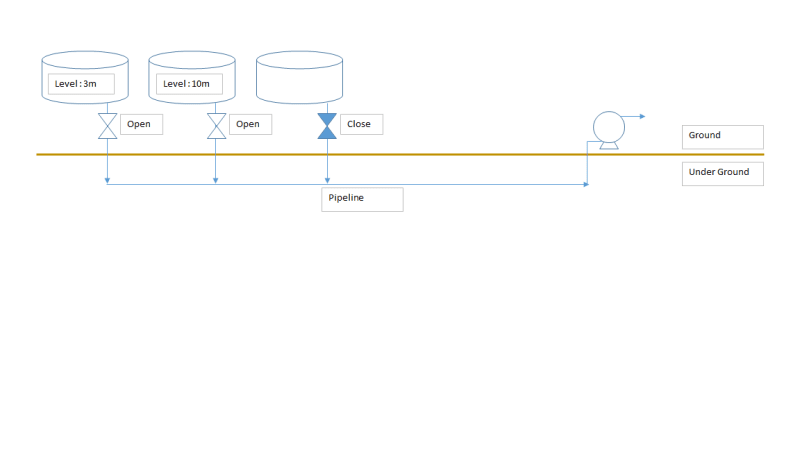Chengin
Chemical
- Nov 1, 2017
- 12
Hi,
I'm a chemical engineer.
I calculated NPSHa to review increasing crude charge rate.
Usually the pump is run from 1 tank(there are 3 tanks), but during switching time another tank's nozzle open and the stream combines together.
Switch starts when the first tank's level goes down 3.7m and it lasts 4hours until its level reaches 2.9m. (The reason of 2.9m is that there could be sludge or other contaminants below 2.9m)
What I would like to know is when I calculate the NPSHa at the minimum pump level(2.9m), should I consider the other tank's level(it might be over 10m) because it services through the same pipeline?
From what I've learned so far when 2 streams combine together it follows the lower pressure so it doesn't seem that I have to consider it.
But one the one hand, once the stream from the lower level's tank combine with another one(crude pipeline is underground) it's NPSHa might be increased because of the high level of tank..
Thank you in advance..
I'm a chemical engineer.
I calculated NPSHa to review increasing crude charge rate.
Usually the pump is run from 1 tank(there are 3 tanks), but during switching time another tank's nozzle open and the stream combines together.
Switch starts when the first tank's level goes down 3.7m and it lasts 4hours until its level reaches 2.9m. (The reason of 2.9m is that there could be sludge or other contaminants below 2.9m)
What I would like to know is when I calculate the NPSHa at the minimum pump level(2.9m), should I consider the other tank's level(it might be over 10m) because it services through the same pipeline?
From what I've learned so far when 2 streams combine together it follows the lower pressure so it doesn't seem that I have to consider it.
But one the one hand, once the stream from the lower level's tank combine with another one(crude pipeline is underground) it's NPSHa might be increased because of the high level of tank..
Thank you in advance..

